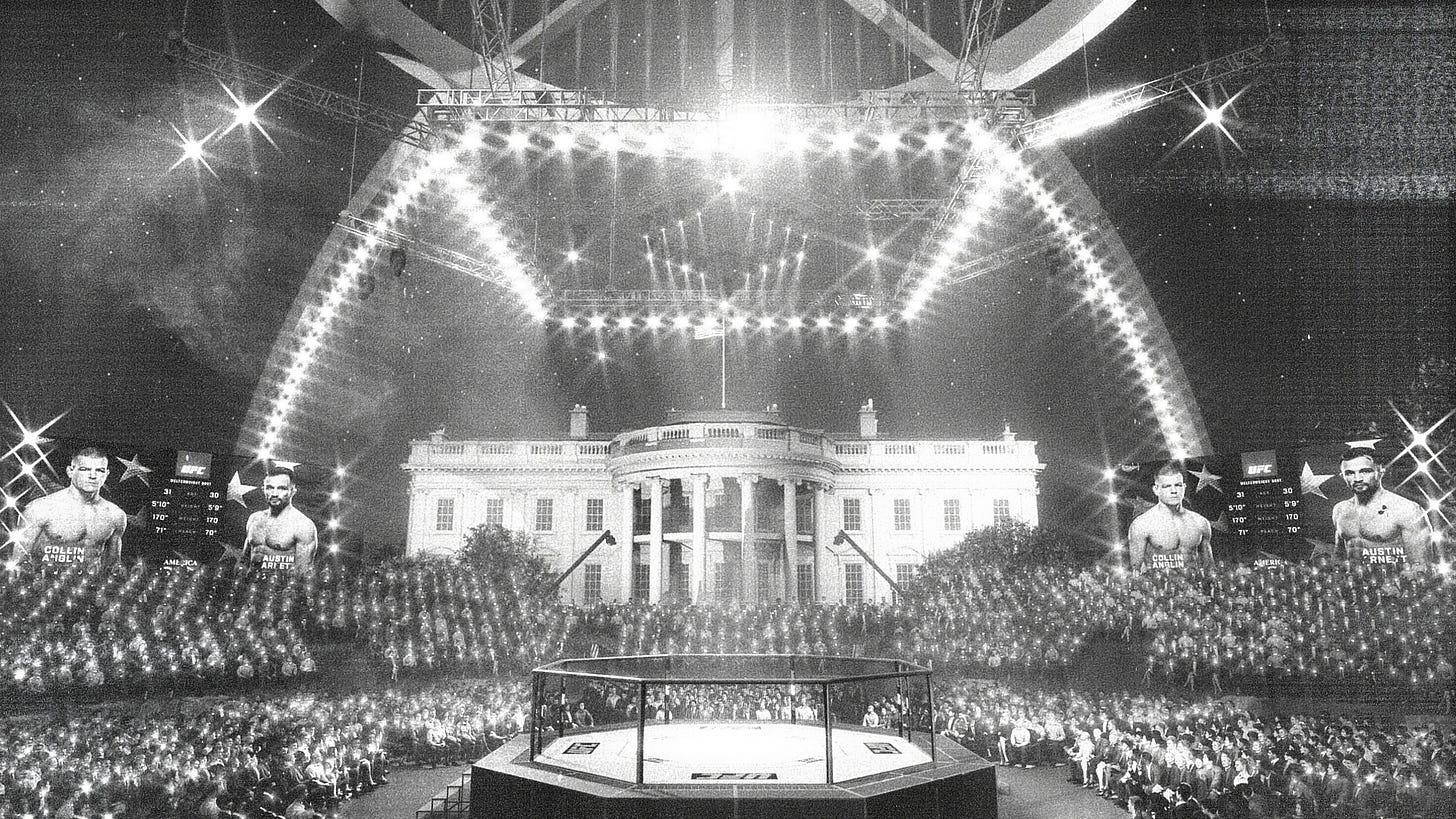Dashboard Culture vs. Camouflage Culture
How the White House UFC fight defines our moment
The following piece is a collaboration between Matt Klein + Rémi Carlioz.
Rémi Carlioz is creative director and cultural strategist. He’s the Founding Partner of La War Room, a global information warfare agency, and founder of Studio Paname, a creative and cultural strategy studio. Carlioz works with governments, brands, and Fortune 500 companies to buil…


